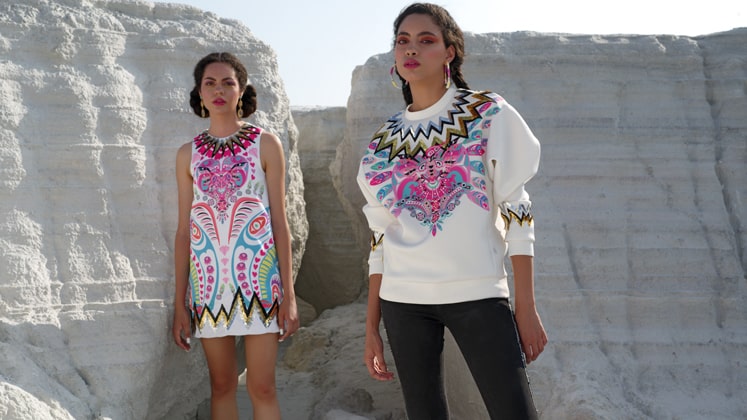News and Features
Brand-designer collaborations - the game changer in Indian retail industry
20 January 2020
Apparel Resources

Today’s brands are increasingly leaning on fashion designers for business associations ranging from signature lines to limited edition special range.And for now, this is the best bet since it adds a newness to the collection and fuses the brand aesthetics with the designer’s sense of style and understanding of what’s in vogue.
The age of digital connectivity and fashion awareness has changed consumer behaviour for good and they expect brands to create experiences personalised to their distinct fashion needs which has given way to the trend of brand-designer collaborations not only in India but also worldwide.
Industry Experts on Collaborations
“The major factor pushing this trend is the access to each other’s respective customer base, thereby making the brand visibility even stronger and retailing a collection that’s new, trendy and different from the regular ones. It’s a win-win situation for both the parties and is expected to go on in the days to come.” - Christian Westphal, Chief Creative Officer, Koovs
“It opens a new audience and creates a touch of aspiration. There are a lot of brands that lie on the bridge between premium and luxury, and designer collaborations capture that bridge really well. This is a way to introduce a whole new audience to designerwear and the designer also opens up to a new set of customers.” - Tanvi Malik, Co-Founder, FabAlley
Strategies for a successful collaboration

While it’s an established fact that the corporate-designer collaboration is not something new, the acceptability of these collections by the consumer base of the respective brands has drastically gone up in the recent years with a sudden need in them to stand out and the aspiration to own a premium set of clothing. These premium set of clothing definitely come at a premium price, but the retail brands strategically price them for their set of consumers.“The price point is the most strategic aspect behind the success of a collaborative collection, which needs to be attractive yet premium,” maintains Tanvi.
Biba by Anju Modi is smartly priced ranging from Rs.5,995 to Rs.29,950. For Koovs as well, the collaborative collection is priced higher than the usual price bracket; however, the brand tries to work around to make it as affordable for its consumers as possible. “We do not collaborate with super luxury brands and then sell at 10 times the average price at Koovs. We need to find a price architecture within the acceptance of our customers, otherwise it could never work,” avers Christian.
While a lot goes into launching these collaborative collections and making them a success, brands ensure to have one-of-a-kind marketing strategy in place with advertising, promotions, show windows, visual merchandising, direct marketing and social media activation. Also, to maintain the premiumness and exclusivity of the collection, these are mostly not retailed across all the retail channels of the brand but are carefully offered at their premium locations. Biba’s collaborative collection which comprises metallic and floral prints, intricate hand embroidery and fine zari work on pure fine fabrics like silk, chanderi, velvet and modal, for example, is available at select brand stores and on its website.
The two partners in the game need to be very cautious about maintaining their design language and aesthetics in order for the collection to gel and fare well with the consumers. For FabAlley, it starts with getting the designer acquainted with the brand and customer base through sharing of brand designs, bestselling products, products that have garnered good sales in the past to know the choices of customers better, commercial information regarding the brand, and from thereon leading to discussions on what would work and what would sell.
Designers Speak
“It has been great as this association has allowed me to showcase my designs across the massive retail network of the brand. Biba enjoys a great geographical spread and this partnership allows many more people to experience my designs and I am really excited and looking forward to a fruitful and a meaningful association going forward.” - Anju Modi on launching a collection with Biba
“For us, a designer to be associated with a global brand is good; it definitely opens up a wide pool of their customer base which helps gain traction. For a designer, it’s not an easy thing to open their own store and it is not even on their agenda against the brands which already have a good number of stores. It is a win-win situation for both the partners.” - Aaquib Wani, New Delhi-based experiential designer and art director
A collab-right future?

In India, as opposed to in the developed markets, such collaborations are often looked at as temporary arrangements. However,as the industry voiced together that there was no downside to having such collaborations, it is only with time that India will witness a slew of these partnerships, which will be a long-term arrangement rather than an experimental one.
Comments

